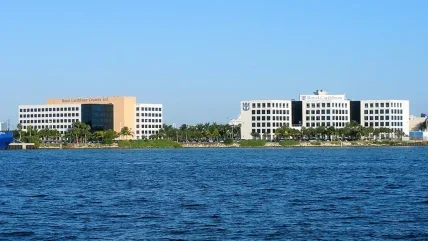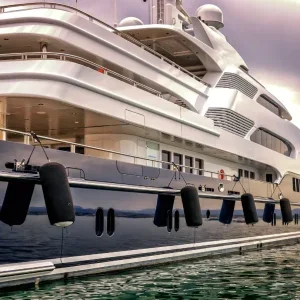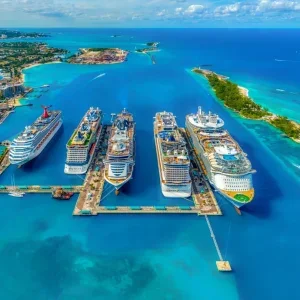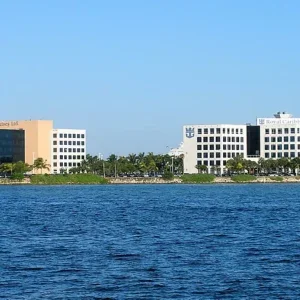
Inflation is a pervasive economic phenomenon impacting industries worldwide, and the cruise industry is no exception. The sector, already navigating post-pandemic recovery and evolving consumer expectations, now faces the added pressure of rising costs. This article explores the multifaceted effects of inflation on the cruise industry, examining cost structures, consumer behaviour, and strategic responses by leading companies.
The Current Inflation Landscape
Inflation, characterised by the general rise in prices and the decline in purchasing power, has reached levels not seen in decades. According to the International Monetary Fund (IMF), global inflation rates surged significantly post-2020, driven by supply chain disruptions, increased demand, and fiscal stimulus measures. For the cruise industry, inflation manifests in higher fuel prices, increased labour costs, and more expensive raw materials, all contributing to the rising operational costs.
Rising Operational Costs
Fuel Prices
Fuel is a significant expense for cruise lines, accounting for a substantial portion of operational costs. The volatility of oil prices, exacerbated by geopolitical tensions and supply chain issues, directly impacts the cost structure of cruise operations. For instance, the Brent crude oil price, a benchmark for international oil prices, saw significant fluctuations, influencing budget planning and pricing strategies for cruise companies.
Labour Costs
The cruise industry relies heavily on a diverse, international workforce. The increase in wages across various countries, driven by inflationary pressures, adds to the operational expenses. Additionally, the industry faces heightened regulatory scrutiny and enhanced safety protocols post-pandemic, necessitating more training and compliance costs. Cruise lines must balance fair compensation with cost management to maintain service quality and crew satisfaction.
Raw Material and Supply Chain Costs
From food and beverages to maintenance supplies, the cost of raw materials has risen sharply. Supply chain disruptions have led to shortages and increased prices, impacting the provisioning of cruise ships. According to the Food and Agriculture Organization (FAO), global food prices saw a steep rise, affecting the cost of catering services on board. These increased expenses necessitate strategic sourcing and cost optimisation measures.
Impact on Consumer Behaviour
Pricing Strategies
Inflation affects not only the cost structures of cruise lines but also consumer pricing. Cruise companies face the challenge of balancing price increases to cover rising costs while remaining attractive to price-sensitive customers. Dynamic pricing models and value-added packages have become more prevalent as companies seek to optimise revenue without alienating their customer base.
Demand Elasticity
The cruise industry must navigate the delicate balance of demand elasticity. While some consumers are willing to pay a premium for enhanced experiences, others may cut back on discretionary spending in response to higher prices. Understanding these dynamics is crucial for cruise operators to tailor their offerings and marketing strategies effectively.
Strategic Responses by the Cruise Industry
Cost Management and Efficiency Improvements
To counteract the impact of inflation, cruise lines are focusing on cost management and efficiency improvements. Measures include optimising fuel consumption through advanced technologies, streamlining operations, and enhancing supply chain management. For instance, many cruise companies are investing in LNG (liquefied natural gas) technology to reduce fuel costs and environmental impact.
Technological Innovations
Technology plays a pivotal role in mitigating inflationary pressures. Digitalisation, automation, and the use of artificial intelligence in predictive maintenance and operational efficiency can significantly reduce costs. For example, Royal Caribbean has implemented AI-driven solutions to optimise route planning and fuel efficiency, resulting in substantial cost savings.
Diversification of Revenue Streams
Diversifying revenue streams is another strategy employed by cruise lines to combat inflation. Onboard spending, including excursions, specialty dining, and retail, offers additional revenue opportunities. Enhancing these experiences and offering exclusive packages can drive onboard spending and offset operational costs. Collaborations with luxury brands and unique shore excursions have become increasingly popular.
Sustainable Practices
Sustainability is not only an ethical imperative but also a cost-saving strategy in the long term. Energy-efficient ship designs, waste reduction initiatives, and sustainable sourcing practices contribute to cost management. For instance, the adoption of solar panels and wind turbines on newer ships helps reduce reliance on traditional fuels, lowering operational costs and carbon footprints.
Case Studies: Leading Cruise Lines’ Responses to Inflation
Carnival Corporation
Carnival Corporation, one of the largest cruise companies globally, has implemented a multi-faceted approach to tackle inflation. The company focuses on operational efficiencies, cost control measures, and strategic investments in technology. Carnival’s fleet modernisation programme includes energy-efficient ships and LNG-powered vessels, aiming to reduce fuel costs and environmental impact.
Royal Caribbean Group
Royal Caribbean Group has leveraged technological innovations to enhance operational efficiency and cost management. The company’s use of AI and data analytics for route optimisation and fuel efficiency exemplifies its strategic response to rising costs. Additionally, Royal Caribbean’s emphasis on enriching onboard experiences and exclusive excursions helps drive ancillary revenue.
Norwegian Cruise Line Holdings
Norwegian Cruise Line Holdings (NCLH) has adopted a comprehensive approach to manage inflationary pressures. The company’s focus on premium and luxury segments allows for greater pricing power and enhanced onboard spending. NCLH’s investments in technology and sustainability, such as energy-efficient ship designs and waste management systems, contribute to cost optimisation.
Future Outlook: Navigating Uncertainty
The cruise industry’s future will be shaped by its ability to navigate inflationary pressures and economic uncertainties. Strategic foresight, innovation, and adaptability will be crucial. Industry stakeholders must remain vigilant, monitoring economic indicators and consumer trends to make informed decisions.
Adapting to Changing Consumer Expectations
Post-pandemic, consumers are increasingly prioritising health, safety, and unique experiences. Cruise lines must continue to innovate and adapt to these changing expectations. Offering flexible booking policies, personalised experiences, and enhanced health protocols will be essential in maintaining consumer trust and demand.
Embracing Sustainability
Sustainability will play an ever-growing role in the cruise industry’s strategy. Regulatory pressures and consumer demand for eco-friendly practices will drive investments in green technologies and sustainable operations. The industry’s commitment to sustainability will not only mitigate costs in the long term but also enhance its reputation and appeal.
Conclusion
Inflation presents significant challenges to the cruise industry, impacting costs, consumer behaviour, and strategic planning. However, with proactive measures, technological innovations, and a focus on sustainability, the industry can navigate these challenges effectively. By understanding the complexities of inflation and implementing strategic responses, cruise lines can ensure resilience and continued growth in a dynamic economic landscape.
The cruise industry’s journey through inflation is a testament to its resilience and adaptability. As it sails through these turbulent economic waters, the industry’s ability to innovate, optimise, and embrace sustainability will determine its future success.






